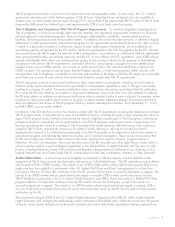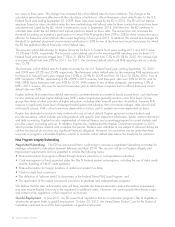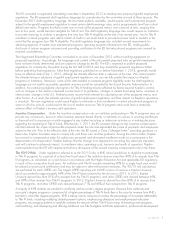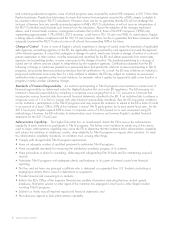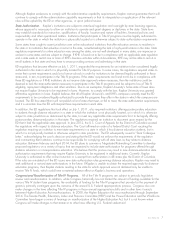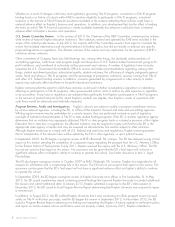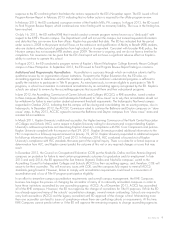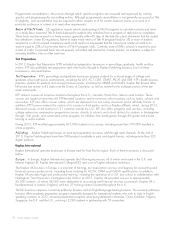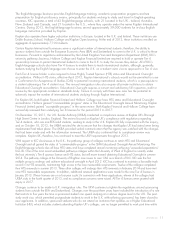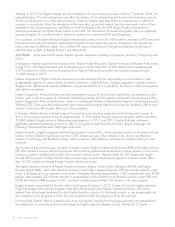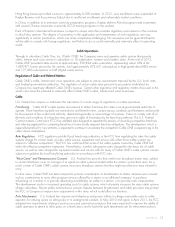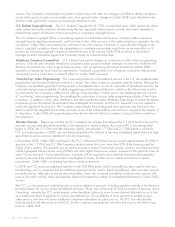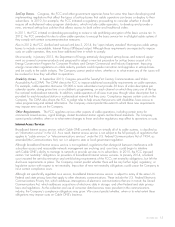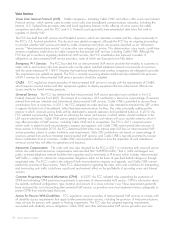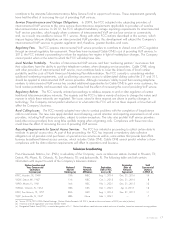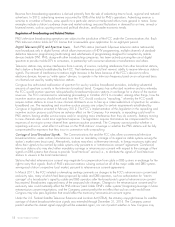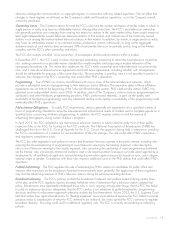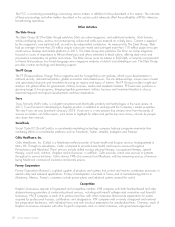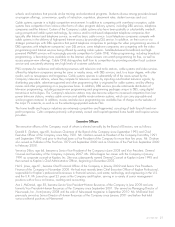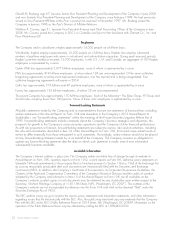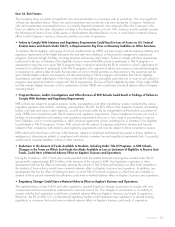Washington Post 2013 Annual Report Download - page 31
Download and view the complete annual report
Please find page 31 of the 2013 Washington Post annual report below. You can navigate through the pages in the report by either clicking on the pages listed below, or by using the keyword search tool below to find specific information within the annual report.Hong Kong business provided courses to approximately 8,000 students. In 2013, new enrollments were suspended at
Kaplan Business and Accountancy School due to insufficient enrollments and unfavorable market conditions.
In China, in addition to its extensive university preparation programs, Kaplan delivers A-Level programs and cooperates
with several Chinese universities to provide ACCA training programs to the students.
Each of Kaplan’s international businesses is subject to unique and often complex regulatory environments in the countries
in which they operate. The degree of consistency in the application and interpretation of such regulations can vary
significantly in certain jurisdictions, which can make compliance challenging. No assurance can be given that Kaplan
will be able to comply with foreign regulations, and failure to do so could materially and adversely affect its operating
results.
Cable Operations
Through its subsidiary Cable One, Inc. (Cable ONE), the Company owns and operates cable systems that provide
video, Internet and voice service to subscribers in 18 midwestern, western and southern states. At the end of 2013,
Cable ONE provided cable service to approximately 538,894 video subscribers, representing about 36% of the
1,449,971 homes passed by the systems, had approximately 472,631 subscriptions to high-speed data (HSD) service
and 177,483 subscriptions to VoIP (digital voice) service.
Regulation of Cable and Related Matters
Cable ONE’s cable, Internet and voice operations are subject to various requirements imposed by the U.S. local, state
and Federal governmental authorities. The regulation of certain cable rates pursuant to procedures established by
Congress has negatively affected Cable ONE’s revenue. Certain other legislative and regulatory matters discussed in this
section also have the potential to adversely affect Cable ONE’s cable, Internet and voice businesses.
Cable
U.S. Federal law requires or authorizes the imposition of a wide range of regulations on cable operations.
Franchising. Cable ONE’s cable systems are required to obtain franchises from state or local governmental authorities to
operate. Those franchises typically are nonexclusive and limited in time, contain various conditions and limitations and provide
for the payment of fees to the local authority, determined generally as a percentage of revenues. Failure to comply with all of
the terms and conditions of a franchise may give rise to rights of termination by the franchising authority. The U.S. Federal
Communications Commission (FCC) has adopted rules designed to expedite the process of awarding competitive franchises
and relieving applicants for competing franchises of some locally imposed franchise obligations. This development, which is
especially beneficial to new entrants, is expected to continue to accelerate the competition Cable ONE is experiencing in the
video service marketplace.
Rate Regulation. FCC regulations prohibit local franchising authorities or the FCC from regulating the rates that cable
systems charge for certain levels of video cable service, equipment and service calls when those cable systems are
subject to “effective competition.” The FCC has confirmed that some of the cable systems owned by Cable ONE fall
within the effective-competition exemption. Nevertheless, monthly subscription rates charged for the basic tier of cable
service, as well as rates charged for equipment rentals and service calls for many of Cable ONE’s cable systems, remain
subject to regulation by local franchising authorities in accordance with FCC rules.
“Must-Carry” and Retransmission Consent. U.S. Federal law provides that a television broadcast station may, subject
to certain limitations, insist on carriage of its signal on cable systems located within the station’s prescribed area. As a
result, certain of Cable ONE’s cable systems must carry broadcast stations that they might not otherwise have elected to
carry.
In other cases, Cable ONE has been required to provide consideration to broadcasters to obtain retransmission consent,
such as commitments to carry other program services offered by a station or an affiliated company, to purchase
advertising on a station or to provide advertising availabilities on cable to a station, or to provide cash compensation.
This development results in increased operating costs for cable systems, which ultimately increases the rates cable systems
charge subscribers. Recent public retransmission consent disputes between broadcasters and cable providers may prompt
the FCC or Congress to impose new requirements in this area, which could affect our business.
Pole Attachments. U.S. Federal law requires most telephone and power utilities to charge reasonable rates to cable
operators for utilizing space on utility poles or in underground conduits. In May 2010 and again in April 2011, the FCC
adopted new requirements relating to pole access and construction practices that were expected to improve the ability of
cable operators to attach to utility poles on a timely basis and to lower the pole attachment rate for telecommunications
2013 FORM 10-K 13


